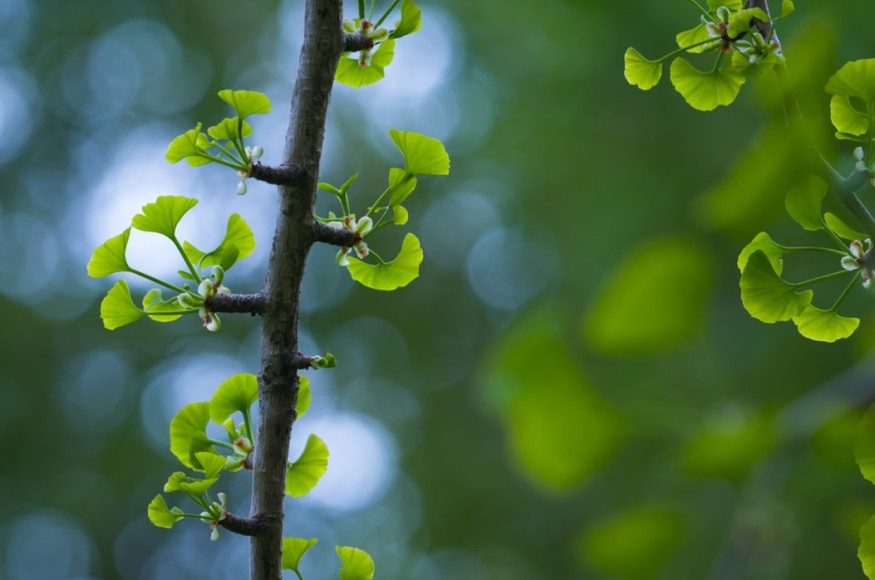
For those who are familiar with alternative medicine, Ginkgo biloba, or simply ginkgo, is a recurring herbal medicine. As a matter of fact, ginkgo is a popular supplement: the extract from the ginkgo is collected from dried leaves and package it into liquid extracts, capsules, and tablets. It is believed that the Ginkgo biloba contains high levels of flavonoids and antioxidants that protect the body from oxidative cell damage and harmful free radicals. It is also believed to have components that are helpful for the treatment of blood disorders, it can help improve memory, enhance cardiovascular function, and improve eye health.
Aside from its medicinal usage, the ginkgo is also an evolutionary important tree as it is one of the oldest species of tree in the world and is considered to be a living fossil. Some ginkgo tree can grow up to 130 feet tall and love for over a thousand years -- some trees are even reported to have existed in this world for 2,500 years. The Ginkgo biloba is believed to have survived major extinction events throughout the planet's evolutionary history.
In a new study conducted by a team of researchers from various institutions in China and the United States, it was discovered that the ginkgo trees do not undergo senescence or the gradual deterioration of functional characteristics. Simply put, ginkgo trees do not age and this must be the reason why they have survived in this world for so long.
Researchers analyzed the RNA harvested from the cambium of a Ginkgo biloba tree and the main goal is to understand more about the tree's longevity. A team of researchers working in China collected samples of tissues from nine ginkgoes that are aged approximately 600, 200, and 20 years old. In this study, the researchers are more interested in the cambium -- the thin layer between the outer bark and the wood -- unlike previous studies that focused on the leaves. Upon inspection of the tissue, the RNA analysis showed no sign of aging, however, they discovered that older Ginkgo biloba trees produce less the common plant hormone auxin and produce more abscisic acid, the hormone produced to respond to stress. The older trees of Ginkgo biloba has exhibited thinner annual rings and no differences in disease resistance and efficiency in photosynthesis and seed germination.
The Ginkgo biloba trees must have been a mystery to the researchers especially since they cannot find any sign of programmed death and cannot explain why senescence is close to impossible. Evidence throughout a tree's evolutionary history suggests that it can be immortal, however, the researchers insist that there will always be conditions that will kill them -- fire, disease, and the weather, for instance. Human activities are the primary threat to the immortal lives of Ginkgo biloba trees due to overlogging and harvesting the plant for supplements. Although the researchers were able to publish their first observation of the RNA analysis from Ginkgo biloba in the Proceedings of the National Academy of Sciences, they admit that the study was limited in scope and it can still be possible that the Ginkgo biloba exhibits senescence after all.
© 2026 ScienceTimes.com All rights reserved. Do not reproduce without permission. The window to the world of Science Times.











